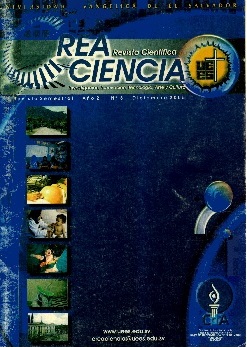The brachial perimeter as an indicator of nutritional status in front of the indicators weight / age, height / age, weight / height, in preschoolers of the external pediatric office of the Zacamil National Hospital
DOI:
https://doi.org/10.5377/creaciencia.v0i3.9238Abstract
In El Salvador, an important part of children suffer from malnutrition, which in its severe forms and in pre-school age, has an impact on their growth and development. At this age, weight and height increases gradually decrease, however, increases in arm muscle area are moderate but uninterrupted from 18 to 69 months, so the brachial perimeter is a sensitive indicator, and specific in the detection of nutritional changes in the body cornposition in preschool. The objective was to establish the degree of sensitivity and specificity of the brachial perimeter as an indicator of body mass, against the measures Weight / Age, Size / Age and Weight / Size. In this descriptive, cross-sectional, correlational study, 100 children from 72 to 48 months of age were measured, in a simple randomized manner at the Zacarnil National Hospital External Consultation, considering as Study variables: Weight, Height, Brachial Perimeter, Sera, Age. The anthropometric measurement techniques as proposed by the World Health Organization (WHO) are: Anthropometric reference parameter: Score Z. The statistical analysis program Epi-Info 2002 was used; Sensitivity and specificity of the brachial perimeter were calculated against weight / age, height / age and weight / height indicators, correlation coefficient. It was found that 83% of the children were eutrophic according to the Z score of the brachial perimeter and 17% had some degree of malnutrition. The specificity of the brachial perimeter was: 95%, 95.7% and 86.9% when related to weight / age, weight, size and height / age respectively. The sensitivity of the brachial perimeter: 42%, 33% and 12.5%. Erg eutrophic correlation coefficient: brachial perimeter / weight: 0.72. Brachial perimeter / Size was 0.41. And versus Weight / height it was 0.65. Errnutrition correlation coefficient: Brachial perimeter / weight: 0.4. Brachial perimeter / Logging / was —0.2. Words
Downloads
3274
Downloads
Published
How to Cite
Issue
Section
License
© Crea Ciencia
Declaration of originality and assignment of rights
The article must be sent with a declaration of originality, responsibility and assignment of rights of copy of the manuscript, scanned and signed by the author or by one of the authors when the authorship is collective (designated author), stating that the text has not previously published in printed or electronic format, which will not be presented to any other media before knowing the decision of the journal Crea Ciencia and that, if accepted for publication, the authors transfer the copyrights in all forms and media known. At the end of six months of the publication, the text can be shared in another magazine citing the first version of the article published in Crea Ciencia and recording its number and volume. If the article is not published, the UEES agrees to return the rights enunciated to their authors.

Crea Ciencia articles are published in open access and licensed under a Creative Commons Attribution-NonCommercial 4.0 International License.

